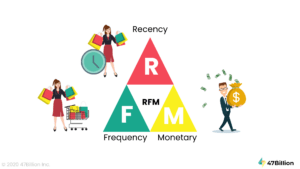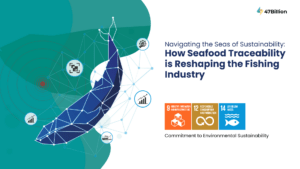When 50 fashion influencers on Instagram shared a picture of themselves wearing the same Louis Vuitton dress, it signals that this dress must be in vogue, and the following weekend the dress would be completely sold out.

According to the survey done by a Marketing Campaign Organising Company, The Shelf, 65% of brands today run influencer campaigns, and 92% of consumers trust recommendations from other people even though they don’t know them personally—over promotional content that comes directly from brands.
According to Think with Google, 70% of teenagers’ YouTube subscribers relate to the platform’s creators more than celebrities, while 4 in 10 millennials believe and follow their favorite creators. Influencer marketing has grown exponentially over the last few years, evolving from a popular trend to an essential component of a successful marketing strategy. Influencer marketing spending in the US will reach $4.14 billion before 2022. Brand deals, sponsorships, affiliate marketing, and collaborations are ways brands work with influencers to get their product or service out into the world. Influencer marketing opens up endless opportunities for brands to amplify their content, connect with consumers and build relationships more organically and directly.
What is influencer marketing?
“Influencer marketing is a marketing style that focuses on using influential people to share a brand’s message with their chosen audience,”
Effective influencer marketing campaigns can lead to:
- Increased brand loyalty
- Increased Credibility
- Quicker Customer Acquisition
- Improved Brand Awareness
- Targeted Marketing
- Winning Partnerships
- Greater brand awareness,
- More sales
However, not all brands enjoy such cut-and-dry results, as they aren’t effectively measuring and improving their programs based on past performance. 30% of surveyed marketers don’t know how their influencer marketing ROI compares to other marketing channels. This suggests a gap in influencer marketing performance data and strategy. Data analytics helps measure the influencer marketing ROI and come away with a list of transparent, comparable, and scalable metrics that will help your team improve performance. You’ll align your influencer campaigns with more significant company goals and objectives.
Five “Cs” KPI- Monitor Spend Efficiency Analysis
While it’s essential to measure performance through KPIs, measuring the efficiency of your influencer marketing investments is just as important––especially when it comes to scaling your influencer marketing program. The following are the five cs KPIs:
- Cost per Post (CPP)
- Cost per Thousand Impressions (CPM)
- Cost per View (CPV)
- Cost per Engagement (CPE)
- Cost per Click (CPC)
These metrics show which influencers and strategies deliver the most bang for your buck. Use them to help you improve your ROI in the future.
Influencer Analytics and Type of Content

Influencer Analytics is built for marketers to understand how each influencer impacts their campaign goals. Start to generate reports with credible data — no more relying on screenshots and praying that the data is accurate and complete.
It also helps to ensure that you’re working with the right influencers. Identify influencers in your industry, analyze their pre-agreement accounts, and get the truth about their organic performance.
Find the best influencers for your brand with influencer analytics
Brand fit is essential to a successful influencer collaboration. With Marketing Analytics, every topic, keyword, brand, or hashtag your track will surface the most influential users in the conversation, ranked by most engaging or most followed. So, the influencers you find are not just popular but also highly relevant in your industry.
Vet and compare influencers using influencer tracking
Influencer marketing that aligns with your goals. With keyword and hashtag analytics to surface influencers in your niche. Use profile analytics to identify those with authentic engagement from those that boost fake followers.
An uncomplicated way to track influencer ROI
No marketing effort should go unmeasured. Measure how each influencer adds to the overall engagement, reach, and impressions your marketing efforts drive. Gather this data in an easy-to-read, easy-to-share dashboard by fetching posts from specific accounts. And show off the impact of influencer campaigns with clearly defined metrics.
Increase transparency and boost performance with influencer analytics
Openness and collaboration drive better influencer relationships. Unlock insights about your influencers’ social media accounts with Influencer Tracking. Forget about asking for screenshots, updating spreadsheets, or getting partial results.
If your initial KPI and ROI analysis indicate your program is underperforming, dig a little deeper to help your team determine what went wrong.
Do your influencers resonate with your brand and target audience?
Influencer loyalty is a metric that helps determine a solid influencer-brand match. Influencer loyalty looks at how frequently an influencer mentions your brand. The higher the loyalty number, the more likely you picked influencers who genuinely love your brand. When that alignment is lacking, your campaigns can be inauthentic, ultimately undermining their performance.
By tracking influencer data, you can:
- Monitor how they resonate with different demographics
- Determine whether they resonate with your target audience
- Set custom metrics to track
Which type of content drives the best results?
Ask your team how different types of influencer content perform. Influencer marketing content strategy is nuanced because social trends change incredibly fast. Your team must evaluate the best content formats, themes, and platforms.
Ask whether your target audience responds better to curated pictures, short TikTok videos, or longer-form YouTube videos, and also ask what types of themes get the most engagement. Does your audience seem to prefer tutorial videos? Comedic videos? Photos with extended inspirational captions?
Brand Awareness
One of the top reasons brands partner with influencers is for brand awareness. Before expecting customers and sales, you first want to get your name out there, and one of the best ways to accomplish that is through an influencer marketing program. If the primary objective of your influencer marketing strategy is geared toward brand awareness, these are the KPIs to keep track of:
Audience Growth: Audience growth or follower count strongly indicates brand awareness. You can choose from several third-party apps to measure your follower growth during your campaign. After the campaign ends, you can also check your mutual followers by visiting your influencer’s profile, tapping on “Followers,” and then on “Mutual.” This is more or less the number of followers you gained from the partnership. For a more accurate number, don’t forget to view your mutual followers before the campaign begins.
Impressions & Reach: One of the advantages of partnering with influencers is their large audience base. This is your opportunity to reach an audience. Instagram defines “impressions” as the number of times a single user has seen your post; reach on the other hand, is the total number of unique users who have accessed a particular location/position. All these data can be accessed through Instagram Insights, which is available to all Instagram Business accounts.
Brand name & Hashtag Mentions: How many times was your brand name or campaign hashtag mentioned during the campaign period? Mentions are a strong indication that your campaign is working.
Social Engagement
Engagement is one of the most important KPIs to track to determine the performance of your influencer marketing campaign. On Instagram, concentration is measured by the number of likes and comments on your campaign post or story/video views.
While likes are easily countable and a sign of approval, comments are a more unambiguous indication of active engagement. Comments show that your content left an impact, whether good or bad, this is a great starting point for community building.
You may see that your follower count has increased after running a campaign, but engagement remained low. This may signify a mismatch between your audience and the content you’re producing.
Establishing an influencer marketing measurement framework and unified KPIs will enable your team to measure and compare campaign performance––ultimately giving you a complete picture of your influencer marketing performance. Overall, a data-driven approach to influencer marketing will make it easier to pinpoint what is and isn’t working.
Social Engagement KPI will make it easier for you to measure the health of your influencer campaigns and keep them aligned with your company’s strategies and goals.
Conclusion

There’s no denying that influencer marketing is lucrative. Statics revealed that the market grew from $1.7 billion in 2016 to $9.7 billion in 2020. In 2021, it soared to $13.8 billion, indicating steady growth. This year, the market is projected to expand to a whopping $16.4 billion industry.
Priyanka Chopra (International Celebrity) and Virat Kohli (an Indian Cricket Player) are globally famous marketing influencers who deliver a solid ROI to the brands. Their increasing popularity and millions of likes on their short video formats on platforms like TikTok, Facebook, Instagram, Google, and YouTube, the effect of the global pandemic on consumers, which catalyzed social media consumption, and the optimization of data collection, which marketers used for social media ads. Not only the authentic influencer but Virtual influencers are all the rage these days. Blurring the line between reality and fantasy, these avatars bear an uncanny resemblance to humans, making it challenging for people to differentiate between these digital avatars and other influencers. Kyra termed “India’s first Meta-Influencer,” is fast becoming popular. Her Instagram account is inching closer to 100,000 followers.
So, it is essential for the brands to understand what will separate them from other brands/marketers; however, it demonstrates the exact ROI you’re achieving. The first step to measuring performance is determining which metrics matter most to the brand. From there, with suitable attribution tracking in place and a dedicated social media dashboard, you’ll be able to automate much of your influencer marketing analytics.




